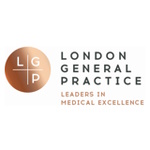X
Need a scan?
More
- Bone density scan
- Bowel cancer screen
- Bronchoscopy
- Colonoscopy
- Coronary angiogram
- Coronary angiography
- Cystoscopy
- DEXA bone scan
- ECG (Electrocardiogram)
- EEG (Electroencephalography)
- ERCP
- Fallopian tube examination
- Gastroscopy
- Hip arthroscopy
- Hysteroscopy
- Knee arthroscopy
- Laparoscopy
- Laryngoscopy
- Ocular coherence tomography (OCT)
- PET scan
- Proton beam therapy (PBT)
- Shoulder arthroscpopy
- Sigmoidoscopy
- Ureteroscopy
- Vaginoscopy
- Wrist arthroscopy
- X-ray
A to Z Index
X
ABCDEFGHIJKLMNOPQRSTUVWXYZ
Select a suggestion below...
{{suggestion}}
- Find a specialist Search our directory of over 20,000 doctors
- Find a hospital or clinic Search our directory of over 5,000 hospitals and clinics
- What does it cost? Over 5,000 prices for private treatments
- Get a quote From a hospital or specialist near you
- Payment options Explore multiple flexible ways to fund your treatment
- Get on the Fast Track Personalised advice from leading specialists
- Guide Free expert guide to going private
- Blog Opinion from GoPrivate.com experts on UK private healthcare
- Doctor’s Digest Hundreds of articles from GoPrivate.com doctors and specialists
- About us Powered by LaingBuisson
- Join GoPrivate.com Get listed and attract more private patients

